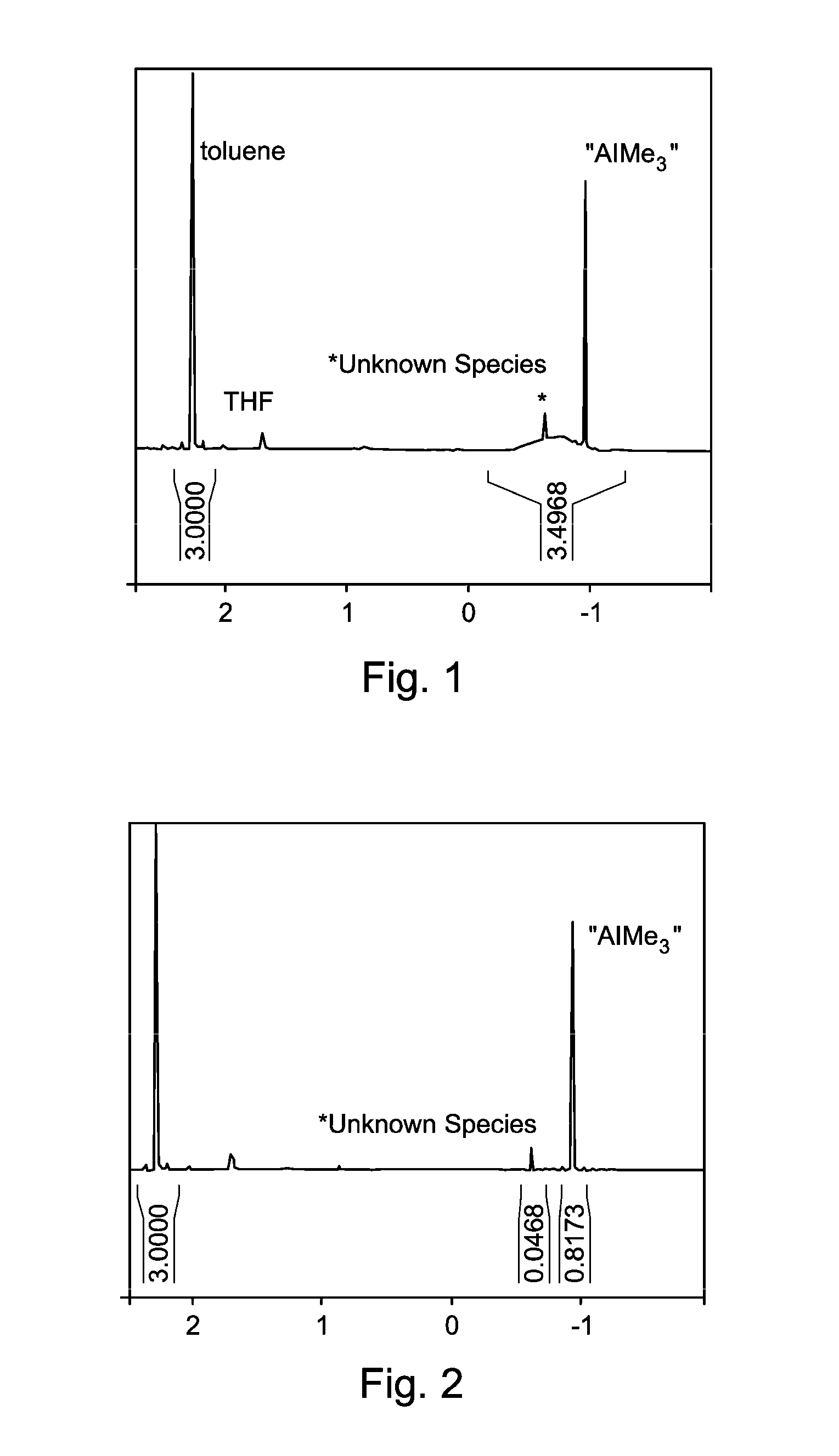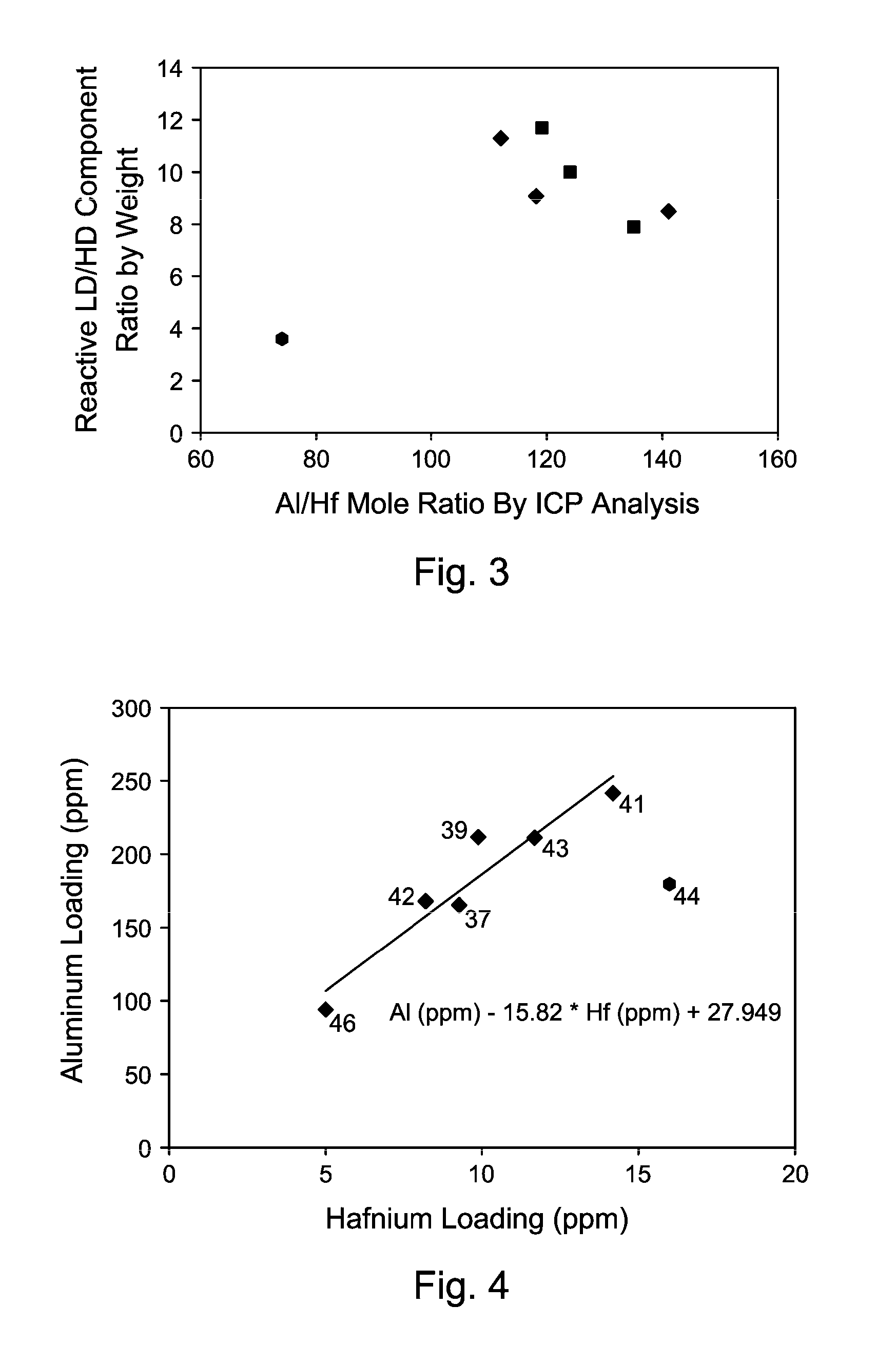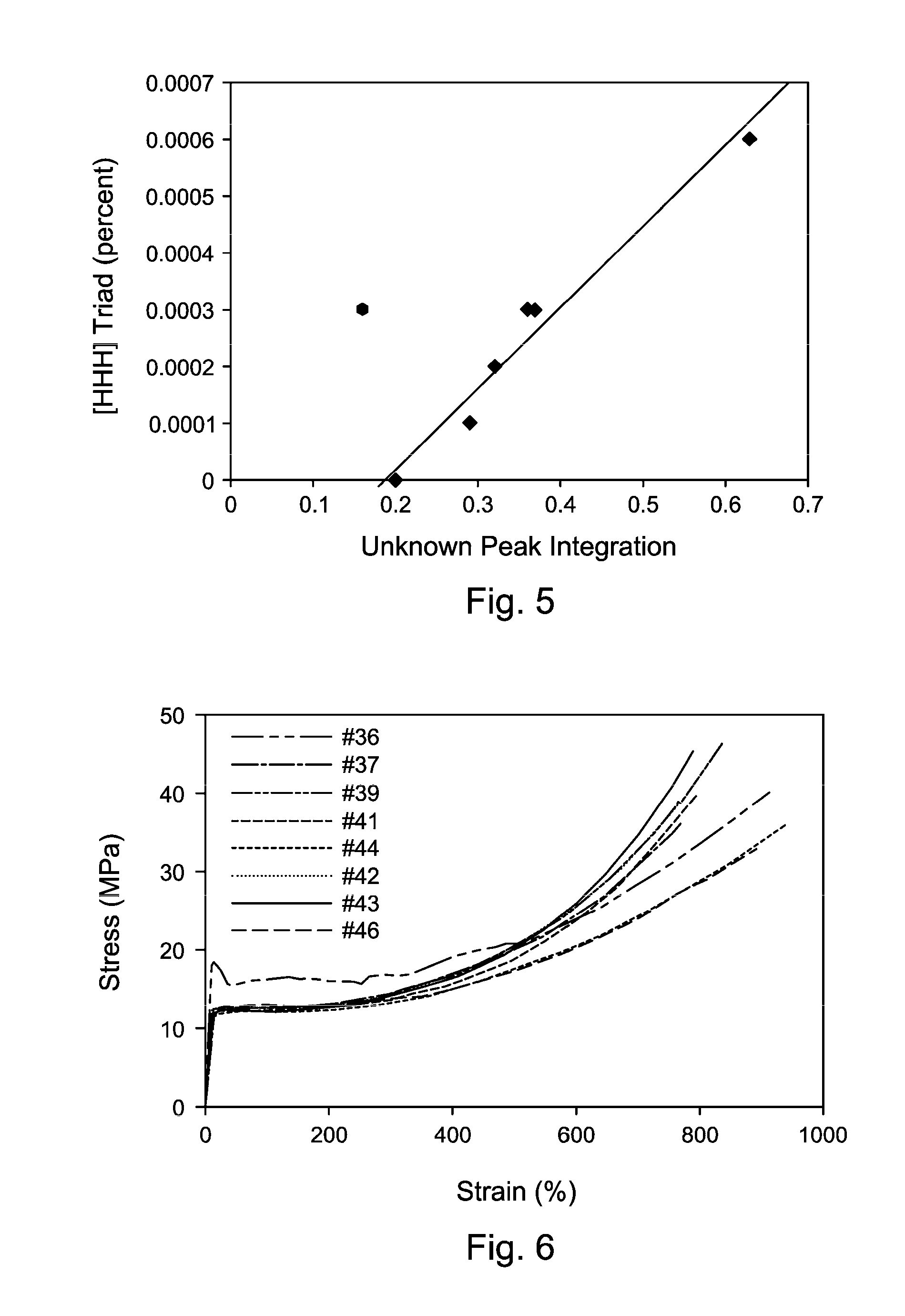Polyethylene and process for production thereof
a technology of polyethylene and polyethylene resin, which is applied in the direction of catalyst activation/preparation, physical/chemical process catalyst, chemical/physical process, etc., can solve the problems of poor impact resistance, low tear strength, and in both machine and transverse film directions, can only achieve superior balance of properties, and achieve improved tensile properties.
- Summary
- Abstract
- Description
- Claims
- Application Information
AI Technical Summary
Benefits of technology
Problems solved by technology
Method used
Image
Examples
example 1
[0230]Ethylene-hexene copolymers were made by reacting ethylene with hexene using supported (n-PrCp)2HfMe2 catalyst and different activator / co-activator combinations. The data indicate that the activator / co-activator combinations greatly affect the performance and composition of the copolymers as well as the polymerization dynamics.
[0231]Catalyst Preparation: Table 1 shows the materials used in preparing the catalysts of this study. The amounts of materials were selected to give the calculated metal loadings shown in Table 1. The level of TMA was increased by addition of neat TMA or decreased by reaction with triphenylmethanol. This reaction preferentially removes the TMA over other Al-methyl species. In this reaction a highly pyrrophoric white solid was formed in addition to small amounts of triphenylethane. The solid was insoluble in toluene and was filtered from the MAO solution before using in supportation. The supported catalysts were filtered onto a medium glass frit, washed w...
PUM
| Property | Measurement | Unit |
|---|---|---|
| mol % | aaaaa | aaaaa |
| partial pressure | aaaaa | aaaaa |
| partial pressure | aaaaa | aaaaa |
Abstract
Description
Claims
Application Information
 Login to View More
Login to View More - R&D
- Intellectual Property
- Life Sciences
- Materials
- Tech Scout
- Unparalleled Data Quality
- Higher Quality Content
- 60% Fewer Hallucinations
Browse by: Latest US Patents, China's latest patents, Technical Efficacy Thesaurus, Application Domain, Technology Topic, Popular Technical Reports.
© 2025 PatSnap. All rights reserved.Legal|Privacy policy|Modern Slavery Act Transparency Statement|Sitemap|About US| Contact US: help@patsnap.com



